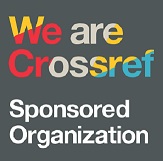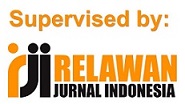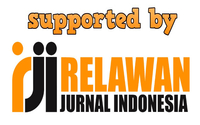A PRAGMATIC AND TEXTUAL ANALYSIS OF HUMOR IN THE CAPTION TRANSLATION OF JOHNNY ENGLISH
Abstract
Full Text:
PDFReferences
Agarwal, M., Agrawal, S., Anastasopoulos, A., Bentivogli, L., Bojar, O., Borg, C., … Zevallos, R. (2023). Findings of the IWSLT 2023 evaluation campaign. Proceedings of the 20th International Conference on Spoken Language Translation. 2023; 1:1–61. doi:10.18653/v1/2023.iwslt-1.1
Baker, M. (1992). In other words: A coursebook on translation. London: Routledge.
Chiaro, D. (2009). Issues in audiovisual translation. In J. Munday. Editor. The Routledge companion to translation studies. London: Routledge. p.141–165.
Delabastita, D. (1996). Introduction: The translator’s turn in translation and humour. The Translator. 1996; 2(2):127–139. doi:10.1080/13556509.1996.10798972
Díaz-Cintas, J., & Remael, A. (2007). Audiovisual translation: Subtitling. London: Routledge.
Gottlieb, H. (1992). Subtitling—A new university discipline. In C. Dollerup, & A. Loddegaard. Editors. Teaching translation and interpreting: Training, talent, and experience. Amsterdam: John Benjamins. p.161–170.
Grice, H. P. (1975). Logic and conversation. In P. Cole, & J. L. Morgan. Editors. Syntax and semantics. Vol. 3. New York: Academic Press. p.41–58.
Halliday, M. A. K., & Hasan, R. (1976). Cohesion in English. London: Longman.
Liu, K. (2015). Translating humor in audiovisual texts: A pragmatic perspective. Perspectives: Studies in Translation Theory and Practice. 2015; 23(2):196–212. doi:10.1080/0907676X.2014.924963
Lu, S. (2025). Humor across cultures: Subtitling strategies in global film distribution. Journal of Intercultural Communication. 2025; 24(1):87–101. doi:10.36923/jicc.v24i1.298
Marty, C., Chemla, E., & Spector, B. (2021). Pragmatic inferences: Beyond literal meaning. Annual Review of Linguistics. 2021; 7:345–364. doi:10.1146/annurev-linguistics-043020-092357
Nan, Y. (2023). An analysis of the translation strategy in the film I Am the Destiny from the lens of translation purpose. Communications in Humanities Research. 2023; 15(1):198–203. doi:10.54254/2753-7064/15/20230700
Nida, E. A. (1964). Toward a science of translating: With special reference to principles and procedures involved in Bible translating. Leiden: Brill.
Nisa, K., Hartono, R., & Sutopo, A. (2017). Cohesion and coherence in students’ argumentative writing. English Education Journal. 2017; 7(1):11–20.
Perego, E., Laskowska, M., Matamala, A., Remael, A., Robert, I., Szarkowska, A., … Bottiroli, S. (2016). Is subtitling equally effective everywhere? A cross-national study on the reception of interlingually subtitled messages. Across Languages and Cultures. 2016; 17(2):205–229. doi:10.1556/084.2016.17.2.4
Perego, E., Missier, F., & Bottiroli, S. (2014). Dubbing versus subtitling in young and older adults: Cognitive and evaluative aspects. Perspectives. 2014; 23(1):1–21. doi:10.1080/0907676X.2014.912343
Sanatifar, M., & Ayob, L. (2022). An intercultural perspective on subtitling cultural gaps for international films: A case of fifteen Iranian films. Journal of Intercultural Communication. 2022; 22(4):22–36. doi:10.36923/jicc.v22i4.95
Szarkowska, A., & Gerber-Morón, O. (2018). Viewers can keep up with fast subtitles: Evidence from eye movements. PLOS ONE. 2018; 13(6):e0199331. doi:10.1371/journal.pone.0199331
Szarkowska, A., Cintas, J. D., & Gerber-Morón, O. (2020). Quality is in the eye of the stakeholders: What do professional subtitlers and viewers think about subtitling? Universal Access in the Information Society. 2020; 20(4):661–675. doi:10.1007/s10209-020-00739-2
Szarkowska, A., Dutka, Ł., & Raczyńska, M. (2016). Comprehension of subtitled videos: An eye-tracking study on the effects of line breaks. Reading and Writing. 2016; 29(5):1089–1108. doi:10.1007/s11145-016-9624-3
Vandaele, J. (2002). Introduction: (Re-)Constructing humour: Meanings and means. The Translator. 2002; 8(2):149–172. doi:10.1080/13556509.2002.10799131
Venuti, L. (1995). The translator’s invisibility: A history of translation. London: Routledge.
Zhang, Y., Mahfoodh, O., & Lin, D. (2024). A corpus-based evaluation of English–Mandarin cultural references between fansubbing and official subtitling. Journal of Intercultural Communication. 2024; 24(1):109–119. doi:10.36923/jicc.v24i1.291
DOI: https://doi.org/10.30743/jol.v7i2.11995
Refbacks
- There are currently no refbacks.
Fakultas Sastra
Universitas Islam Sumatera Utara (UISU)
Jln. Sisingamangaraja Teladan Barat Medan, Indonesia
Phone: +627869911 | e-mail: journal_language@sastra.uisu.ac.id










